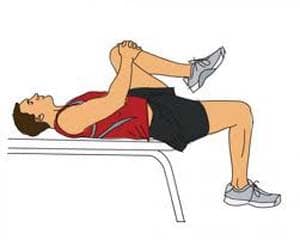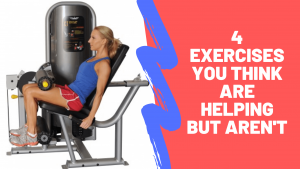When you see the word “couch” in the title of an article about running, you can generally assume it is referring to the one in your living room in front of the television.
Well, as someone always keen to keep you on your toes (metaphorically speaking – please do not start trying to run on your toes), I am in this article actually talking about the couch you lie down on when you visit a physiotherapist, sports therapist, osteopath, etc.
Though our natural tendency and expectation when seeing a manual therapist is to lie back and let him/her “fix” us, the aim of this article is to consider whether having us lie down on a couch is the most effective way for a therapist to be able to assess our injury and in doing so reach conclusions as to how to treat us.
Assessing range of movement: static vs dynamic
Any runner who has been to see a manual therapist will be familiar with the basic protocol. The therapist asks you about your medical history, previous injuries, the circumstances surrounding the current injury and then embarks on a physical assessment of your body in order to see what, when, why, how – all important questions that will help creation him/her create an appropriate treatment plan and recovery programme. One of the most common indicators used to assess an injury is range of motion (ROM).
We are all familiar with the fact that when we hurt ourselves, we typically lose some degree of mobility in that area of the body.
- To assess the hamstrings (back of leg), the therapist will typically ask you to lie on your back on the couch and raise a straight leg
- To assess the quadriceps (front of legs), you lie face down and bend the heel back towards the bottom, and so on.
These tests can give the therapist a lot of information, but the problems start if an assumption is then made, as is often the case, that the ROM seen lying down on the couch (static) is a predictor of the ROM exhibited when you are on your feet and moving (dynamic).
An example: I have treated runners who when lying face down on the couch and bending a leg back cannot get the heel anywhere near their bottom. If I help by pushing on their bent leg, the heel gets a little closer but not a lot. And yet, when I watch the same clients running at a high enough pace (outside or on in the gait lab on a treadmill), their heels are more or less touching their bottom every stride.
In other words, the static ROM they showed when lying on the couch was not a predictor of their dynamic ROM when running, and therefore any assumptions I make based on the couch ROM with regards to the mechanics of the injury, how I best treat it, how I could improve their running performance, etc. become unfounded.
Static range of movement is not an accurate indicator of dynamic range of movement.
The Thomas Test
My personal experiences are not conclusive. For that we need to have a look at the research. Runners who have ever seen a manual therapist for pain in the hip, front of thigh or the knee will probably be familiar with The Thomas Test.
It is commonly used as a way of assessing range of hip extension “permitted” by the hip flexors (front of the hip), and thought to be an indicator of how much hip extension is available when the runner’s body travels over the weight bearing stance leg during forward propulsion.
As can be seen in the image below, the test involves the runner lying back on the couch, clutching one leg close to the chest and allowing the other to relax and move down towards the end of the couch.

- The back of the runner’s right leg can be seen to be making contact with the end of the couch.
- Hip extension on the right leg is therefore recorded as satisfactory.
- If a gap had existed between the back of the right leg and the couch, limited right hip extension would have been recorded.
- The angle of the knee is also used as an indicator of restriction, specifically for the rectus femoris, one of the quadriceps muscles that as well as extending the knee also flexes the hip.
In the image, the runner’s relaxed right knee has an angle of 900, which again is typically regarded as satisfactory. If the angle were less than 900 (it is not uncommon to see a near enough straight leg), a limited ROM would have been recorded.
Now, it is important to stress that I am not saying this test is a total waste of time. As a therapist I still find a place for it during some assessments. However, hopefully some of you are already looking at the image and thinking “But he’s lying down – this only tests static hip extension!” Well, recent research would agree with you.
In a 2009 study, Schache et al. set out to compare the degree of hip extension during running to the hip extension flexibility measured in the clinic using a Thomas Test. Their results were such that they concluded:
Static hip extension flexibility, measured using the Thomas test, was not found to be reflective of these dynamic movements (running)… It is advised that clinicians need to be extremely cautious about making predictions about the dynamic sagittal plane movements of the pelvis and hips based on the outcomes of the Thomas Test.
If we accept that the degree of effectiveness of a treatment depends on the accuracy of the assessment and diagnosis, this could well be a problem for therapists who base decisions solely on static assessment. Using it in combination with dynamic tests is another matter. The question is, why are static tests so popular, and why has no one talked about this much before?
Your muscles don’t decide how you move
Part of the reason that assessment by manual therapists has to date largely ignored the differences between static and dynamic movement is the way we have been taught to view the human body. Movement is typically presented to us as the product of individual structures like muscle, ligaments, tendons and bones.
For example, if you are unable to touch your toes you are told that your hamstrings are “too tight” or “too short”; if you find it difficult to lift something heavy, you are told a particular muscle/s is “too weak”; if you get tired too quickly your muscles are said to lack endurance; go over on your ankle a few times and you are told certain ligaments are too loose, and so on.
Modern research suggests that movement is not a product of how short, long, weak or strong a muscle, ligament or tendon is. Just as bones would be nothing without muscles pulling them, muscles would be nothing without the brain communicating with them; it is the brain that decides how and to what extent we move by comparing sensory feedback at that moment (using a multitude of systems in the body) with a stored memory bank of every movement you have ever performed in your life.
Quite a powerful little hard drive when you think about it. The feedback systems used are proprioceptive, visual, vestibular, and include visual horizon, orientation against gravity, joint compression, angle and torque, tissue tension and length. The feedback is obviously very different when you are lying static on a couch, compared to the dynamic movement of running. We have obviously removed the need for balance, acceleration, deceleration, etc.
Range of motion itself is traditionally seen as a skill. Flexibility is seen as a skill. We are commonly labelled as either inflexible or flexible depending on whether we can touch our toes or do the splits, neither of which our body requires when running. In reality, flexibility and range of movement is very much movement specific. Ben Cormack of movement specialists Cor-Kinetic summarizes this as follows:
Flexibility is a component of successful movement. We need to be able to achieve the right amount at the right time in the right movement.
With that in mind, the effectiveness of lying a runner down on a couch in order to assess whether they can achieve the required range of movement needed at the various stages of the running cycle does seem to be less than we may have once imagined.
How should movement be assessed?
The obvious answer is how we started this article, i.e. get off the couch! Again, I am not suggesting there is no place for a couch in a clinic, but I am suggesting that to assess a movement required for an activity, we need to recreate as much as possible the motor patterns needed for that activity. So for a runner, standing up is pretty much a must. We need to see how much hip extension is achieved on a weight bearing leg, whilst body weight is being transferred, with an element of acceleration or deceleration, throw a rotation in. Not easily done if the subject is lying down on a couch.
Modern research into the role of the brain in governing movement, as opposed to the muscle itself, has also brought with it a departure from the traditional method of pursuing “norms”, i.e. the idea that there is an optimum way for everyone’s body to move. We have talked about this a lot on Runners Connect with regards to there being no one optimum running style that will suit everybody.
If the brain and nervous system are responsible for how we move, comparing sensory feedback from multiple systems with a stored memory bank of movements that an individual has performed in his or her unique life, we should expect and welcome a great deal of variety in the way individuals move.
Taking a median of a sample population and setting that as a per-requisite or goal for efficient movement is simply not backed up by research. Injuries do not always correlate with deviation from such medians.
Pronation
A good example of this is the way in which a “normal” level of pronation has traditionally been preached as a way to fix and avoid injury. A median point was created and suddenly a huge percentage of the runners in the world were labelled as “overpronators”.
Research has shown that trying to “fix” such runners by enforcing a certain type of running shoe or orthodic does not always work, and can in fact sometimes make things worse.
So, instead of comparing ourselves to others, maybe an assessment should involve spending more time comparing what is going on in our own body, e.g. the left side to the right side. I am not talking about striving to achieve perfect symmetry – the idea that symmetry promotes good health and asymmetry leads to pain has been weakened by a lot of research, along with the common and sometimes obsessive goals of “fixing” a tilted pelvis, leg length discrepancy, fallen arches, etc. What I am referring to comparing the capability of the left and right to produce the dynamic movement necessary in running.
Movement variation
Asymmetry is normal and should be accepted as part of nature, but the question is when does our personal variation in movement become a limitation? Ben Cormack explains:
At Cor-Kinetic, we look more at the comparison of the system against itself, e.g. left vs. right. The variation between segmental capabilities, especially in cyclical activities such as running, in an integrated system may provide more clues to increased workload and avoidance strategies of the brain and body than objective comparisons of a median ROM from the subject.
In a future article, we will look at some more modern and potentially appropriate ways that a runner can be assessed when seeking injury treatment. For now, what I hope you see is that even though lying down and “getting fixed” is what we expect and often hope to receive when seeing a manual therapist, the road to recovery in future may well involve us standing up and becoming more involved in the both the assessment and treatment process.
In the meantime, if you are a runner who has experienced less couch use during a physical assessment or indeed a manual therapist who has made a move to using the couch less in assessments and/or treatments, do please feel free to share your thoughts in the comments section. below.
Recommended courses for therapists
Therapists in the UK: If this article has made sense to you and stimulated an interest in learning how to integrate 21st century knowledge, skills and techniques into your practice, I can personally recommend you contact Ben Cormack and his team at Cor-Kinetic.
Therapists in the United States: In terms of focus on brain, neuroscience and modern pain science, I am yet to discover any other education provider who delivers the same training as Cor-Kinetic. (If you are aware of anybody in the States, do let me know!) That said, with regards to learning to see movement in a context based and integrated fashion, The Gray Institute stands out as an international leader in delivery of Applied Functional Science, so they may well be a valuable first point of call.
Happy running!
Matt Phillips is a Running Injury Specialist & Video Gait Analyst at StrideUK & Studio57clinic. Follow Matt on Twitter: @sportinjurymatt
References
1. Cormack, B.: Cor-Kinetic “Evolving Movement”
http://bencormackpt.wordpress.com/ & http://www.cor-kinetic.com/
2. Schache, A..: Relation of anterior pelvic tilt during running to clinical and kinematic measures of hip extension.
http://www.ncbi.nlm.nih.gov/pubmed/10953901
3. Hargrove, T.: Is Symmetry Important? (Guest blog on Paul Ingraham’s SaveYourself.ca)
http://saveyourself.ca/blog/0332.php
4. Ingraham, P.: Your Back Is Not “Out” and Your Leg Length is Fine (2013)
http://saveyourself.ca/articles/structuralism.php





2 Responses
Another brilliant article as usual Matt. I think that Thirst 4 Function (affiliated to The Gray Institute) offer a Running Assessment course in the UK via Pure Sports Medicine in London based on functional assessment.
Thanks for the great articles. Keep them coming.
Hey Sarah! Thanks very much. Means a lot coming from a writer and coach with your experience!
Great link for Pure Sports Medicine too. Have been to a couple of courses with these guys. Great set up. Looking at the Thirst 4 Function weekends as we speak!